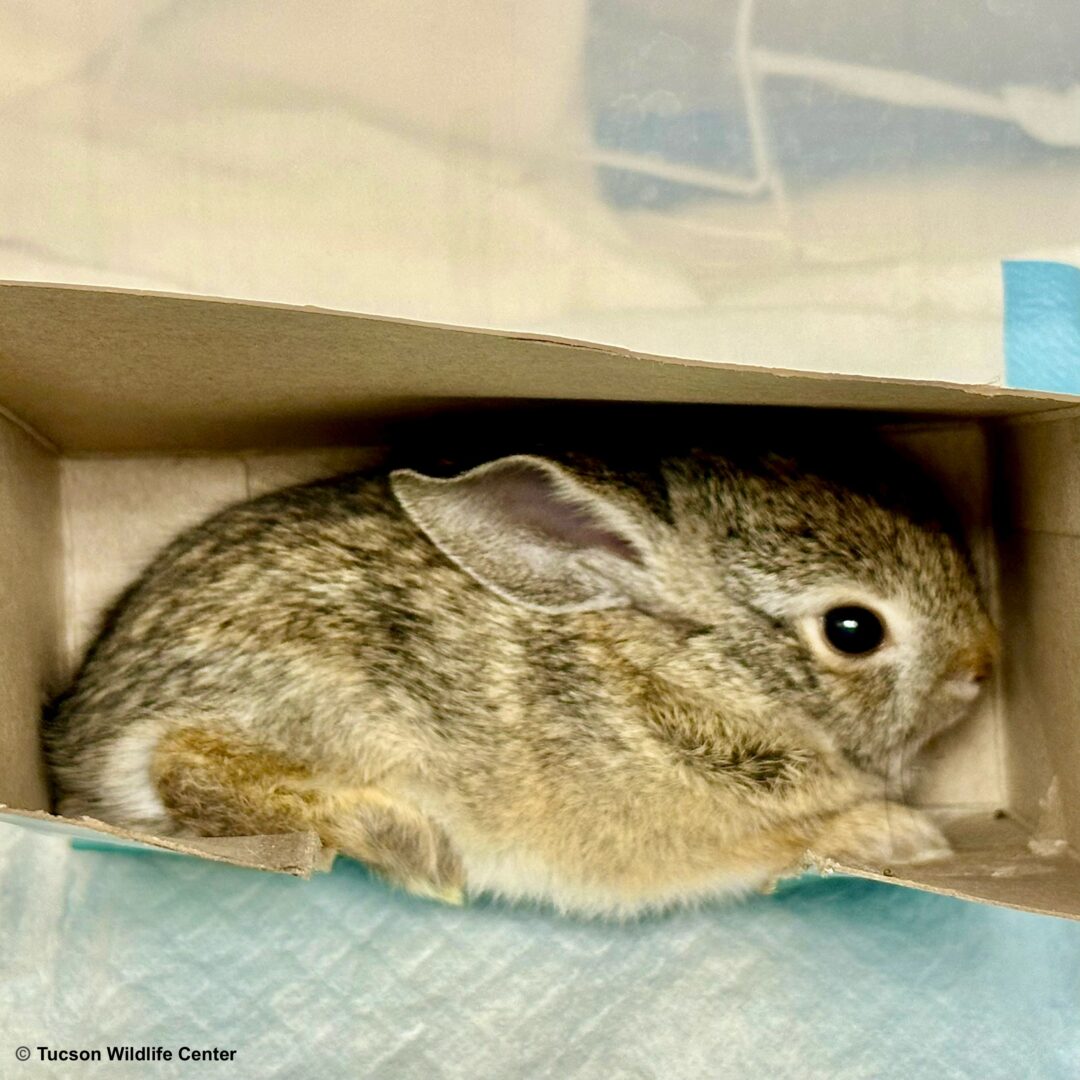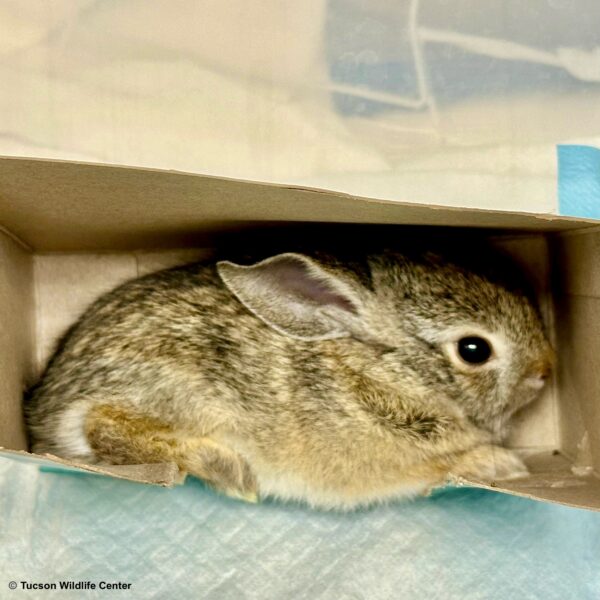
Baby Bunny / Herbicide
It is not uncommon this time of the year in Tucson to see some unusual landscaping … lawns scattered throughout neighborhoods that are blue in color. More than likely these lawns have recently received a weed control application, and the bright color is a dye commonly added to herbicides for visibility and application tracking. While this dye is generally not harmful to wildlife, the herbicide’s active ingredients can potentially harm wildlife and pets.
This baby bunny was recently spotted displaying lethargic behavior on a recently sprayed blue lawn. Quick acting residents scooped the little one up and brought her to Tucson Wildlife Center for assessment. Lethargy can be a sign that the baby may have ingested the herbicide by nibbling on the treated grass or inhaled herbicide particles. The herbicides could have also been absorbed through the bunny’s skin.
TWC’s wildlife care team thoroughly washed the baby to remove any residue of the weed killer, then isolated her in a warm quiet, stress-free environment for observation. In the wild, bunnies seek refuge in burrows or hidden spaces to feel safe from predators. Placing a small cardboard box in her enclosure mimics this natural behavior, giving her a sense of protection in a safe, confined space.
While this bunny was lucky, and we are confident she will recover and be released back to the wild, it is important to note that the potential harm to wildlife after applying herbicides can vary based on the specific herbicide used. It is important to follow the instructions provided on the product’s label, paying special attention to the “Environmental Hazards” section. The University of Arizona’s College of Agriculture and Life Sciences lists some wildlife-friendly alternatives to herbicides for weed control on their website, https://cales.arizona.edu/apmc/docs/Glyphosate-IPMShort.pdf.
If you would like to help wild animals like this baby bunny, please click the donate button below.
Another way you can contribute is to visit our “wish list” on Amazon by clicking on the Amazon Wish List button below. We appreciate it, as will all the wild animals in our care!


